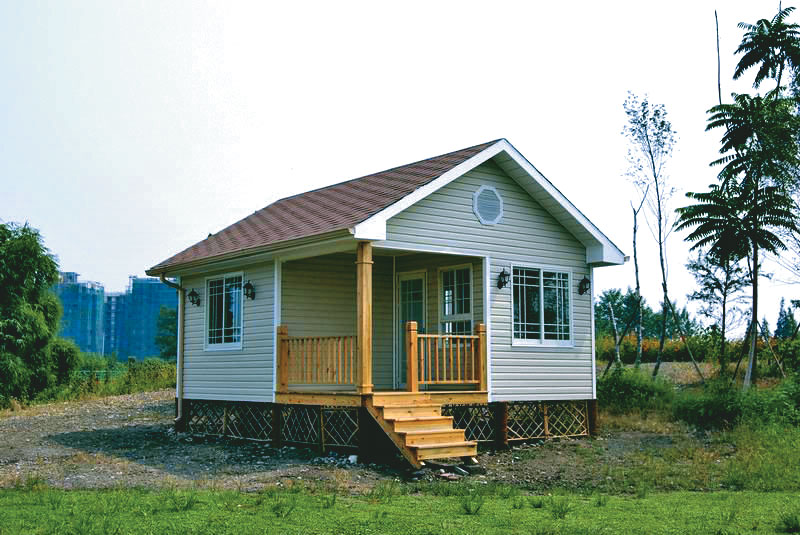Prefab gaining popularity
Kathmandu
After the earthquake that hit the country, the demand for prefabricated homes often referred to as prefab houses is on the rise. Traders claimed that demand has risen by as much as 30 per cent post earthquake. Less time consuming for constructing the structure than traditionally built buildings, light weight, environment friendly, reliable, easy to assemble and dismantle are some key features that have attracted customers to these products.
Prefab homes are manufactured off-site in advance using precise engineering. The components are then easily shipped and assembled. Prefab homes were introduced here more than a decade ago, however, they did not appeal to public for residential purpose. After the devastating earthquake struck, people are now gradually taking prefab into consideration owing to safety reasons. As the demand for prefab houses has increased in the market, many new players have also entered into the market.
“Previously, prefab houses were used only in projects like hydropower, schools, colleges, organisational buildings et cetera. But now, people are gradually using it for residential purposes in earthquake affected districts,” said Narendra Maharjan, Business Development Manager at Arati & Company. Citing that the price of prefab houses depends upon design and material, he said, “We have constructed 50 two-bedroom houses in Sankhu where most of the houses collapsed during the earthquake at Rs 250,000. The price may differ with the requirements of customers and design.”
According to him, they face a material and man-power crunch due to the rise in demand. Citing that the government has decreased custom duty on prefab imports, Maharjan said, “This is indeed a positive step towards prefab and will certainly assist
in making products more affordable to the general public.” He further said that the earthquake has created a good business
opportunity and many companies have put their hands into prefab houses.
“The earthquake has widened the scope for prefabricated products in the market. The traditional mindset that prefab is only for temporary structures is gradually changing,” said Sailesh Sthapit, Site Supervisor at Bira Furniture, which also offers prefab houses.
According to him, the prefab market has witnessed 30 per cent growth after the earthquake. Citing that there is no competition in terms of products, he said, “Though many players have entered this business, they have their own product lines like UPVC, wooden boards, cement, PU boards et cetera. So the competition is healthy.”
Prefab panels are available in different sizes and types. Panels can be obtainable in two- and three-inch thickness. EPS sandwich panel, rock wool sandwich panel, pu sandwich panel, corrugated steel sheet, fibre cement board, et cetera are materials that are used for wall, roof, ceiling and floor. Reportedly, customers prefer cement panel boards which lasts for 30 years.
“We have witnessed maximum inquiries after the quake, however, we do not have as much business as expected,” said Nilmani Sapkota, CEO of Himalayan Prefab. He further said, “As the government is due to introduce a revised National Building Code, people are still in wait and watch mode to decide for construction.” Citing that the exemption of custom duty for prefab is a positive decision, he said, “Prefab is still expensive when compared to other materials. Owing to its utility, the government should work to make it more affordable.” Moreover, he stated that manufacturing prefab panels in Nepal still cost 15 per cent more than imports. According to him, the price of prefab panels starts at Rs 1,100 per sq ft which can go up depending upon quality and design.
Traders mainly import prefab panels and boards from India and China. Prefab structures are reportedly also being preferred especially by resorts, schools, colleges, hotels, cafés, showrooms, party palaces and other project sites including residential buildings.






